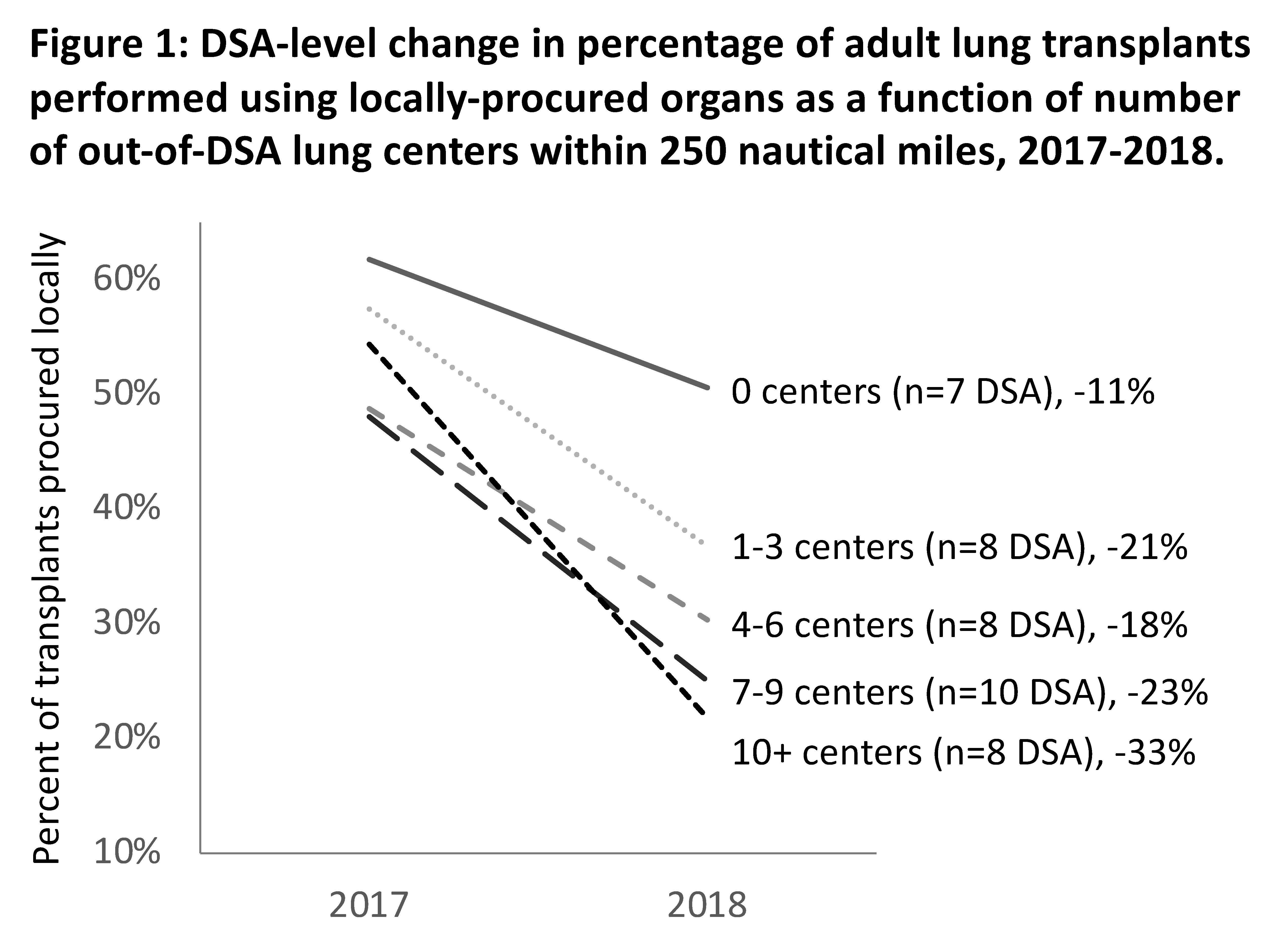Concentric Circles, One Year in: Concentrated Organ Discard and Waitlist Deaths in High Traffic Areas
1Emory, Atlanta, GA, 2Vanderbilt, Nashville, TN, 3Washington University St. Louis, St. Louis, MO
Meeting: 2019 American Transplant Congress
Abstract number: 626
Keywords: Allocation, Donation, Lung transplantation
Session Information
Session Name: Concurrent Session: Late Breaking Oral Abstract
Session Type: Concurrent Session
Date: Tuesday, June 4, 2019
Session Time: 4:30pm-6:00pm
 Presentation Time: 4:30pm-4:42pm
Presentation Time: 4:30pm-4:42pm
Location: Room 206
*Purpose: Lung transplantation was the first organ system to entirely dispense with Donor Service Areas (DSAs) and Regions in favor of 250 nautical mile (NM) circles around donor hospitals. We sought to understand the scale of change after one full year of policy implementation and study the potential impact on relevant area-level transplant parameters.
*Methods: United Network for Organ Sharing data on adult lung donors and transplants from 1/1/17 -12/31/18 were organized by DSA of donation and transplant. Numbers and rates of transplantation, wait list death, and organ discard were collected for each DSA in the pre- and post-policy change era.
*Results: Following policy implementation, the number of lung donors and transplants grew by 4.1% and 3.6%, respectively (Table 1). Waitlist additions grew by 7.0%, while waitlist deaths increased by 9.5%. With respect to distribution, the fraction of grafts transplanted within the DSA of donation dropped by 21.4%, necessitating 486 extra inter-DSA trips. As shown in Table 1, when DSAs with a native program were stratified by the degree of change in local graft origin, markedly higher rates of waitlist death and organ discard were seen in areas with a greater reliance on out-of-DSA organs. These DSAs had preserved transplant volume, but greater travel burden for this caseload (“high traffic”). These changes were not accounted for with regional difference in changes in DCD utilization. In separate analysis, a arger number of out-of-DSA centers located within 250 NM of in-DSA centers was strongly associated with greater reliance on out-of-DSA organs and higher traffic for a given transplant volume.
*Conclusions: Early experience with the new lung distribution system shows moderate national increases in waitlist death and organ discard, at the cost of a significant increase in travel burden. While areas with higher traffic maintained relatively good transplant rates, greater access to competing center markets and lower utilization of local organs were associated with disproportionately greater deaths and organ waste. Close follow-up is necessary to assess unintended consequences of circle-based systems.
To cite this abstract in AMA style:
Lynch RJ, Karp S, Chapman W. Concentric Circles, One Year in: Concentrated Organ Discard and Waitlist Deaths in High Traffic Areas [abstract]. Am J Transplant. 2019; 19 (suppl 3). https://atcmeetingabstracts.com/abstract/concentric-circles-one-year-in-concentrated-organ-discard-and-waitlist-deaths-in-high-traffic-areas/. Accessed December 20, 2025.« Back to 2019 American Transplant Congress


